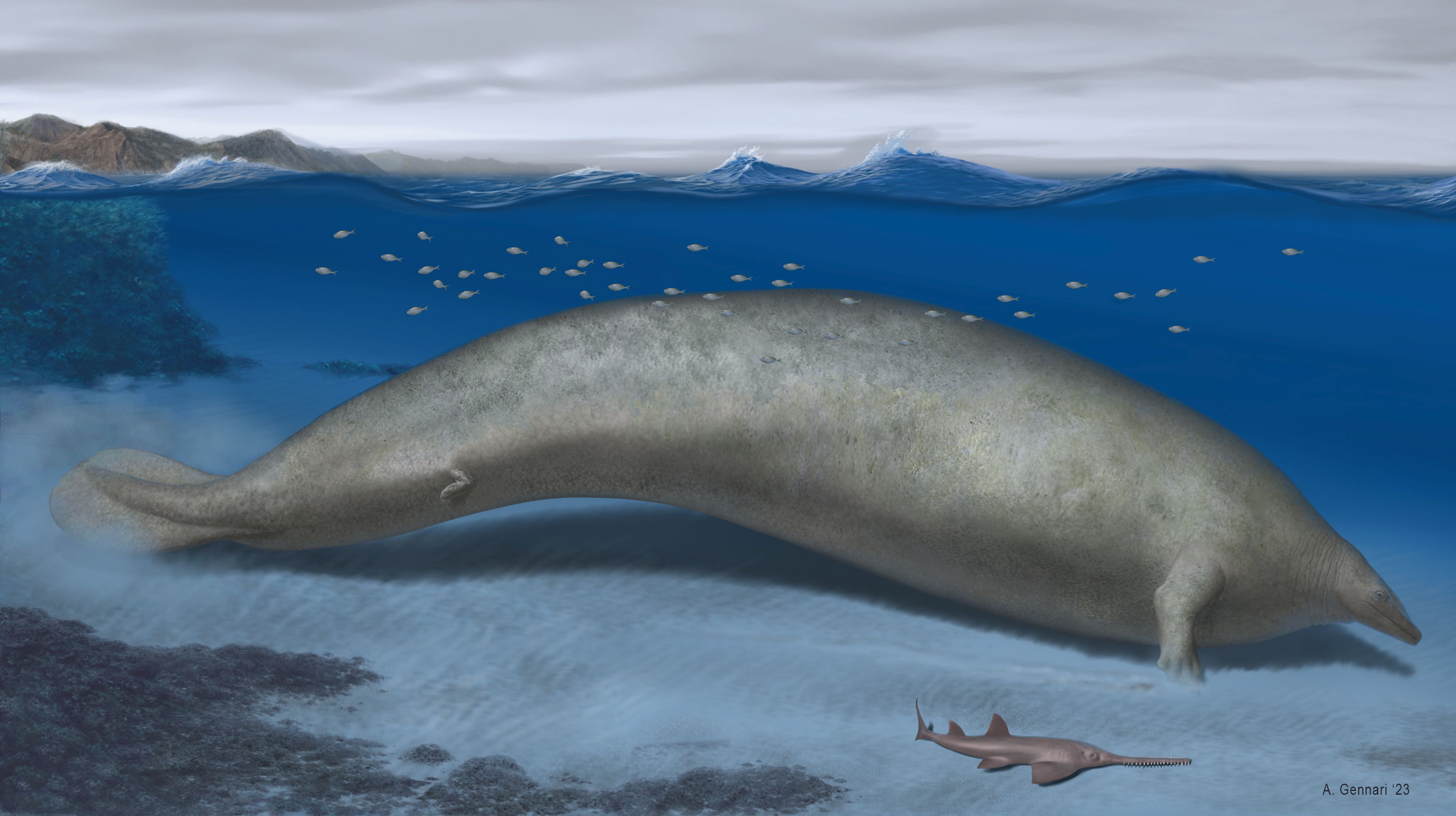Newly described ancient whale could be the heaviest animal ever
Perucetus colossus, an ancient whale that swam off the coast of present-day Peru 39 million years ago, rivals the blue whale as the heaviest animal ever. A blue whale can weigh up to 100-190 tonnes, but the newly described extinct marine mammal weighed between 85 and 340 tonnes, estimate palaeontologists, including Olivier Lambert of the Institute of Natural Sciences (RBINS). The discovery pushes extreme growth in whales to a much earlier phase in their evolution than previously thought. The study is published in the journal Nature.
Palaeontologist Mario Urbina spent decades painstakingly looking for fossils in the desert on the southern coast of Peru. Thirteen years ago, he made an exceptional discovery. When seeing the first field photos, other members of the team were puzzled: what cropped out of the sediments - later dated to the middle Eocene, around 39 million years old - was so large and oddly shaped. Multiple field campaigns were necessary to collect what turned out to be parts of a colossal skeleton. Each of the 13 vertebrae weigh well over 100 kg and the 4 ribs reach a length of about 1.4 m.
The specimen, prepared and now curated at the Museo de Historia Natural, Universidad Nacional Mayor San Marcos (Lima), represents a new species of basilosaurid, the earliest cetaceans (today represented by whales, dolphins, and porpoises) that transitioned to a fully aquatic lifestyle. Whales descended from hoofed land mammals that returned to the sea and that were initially amphibious.
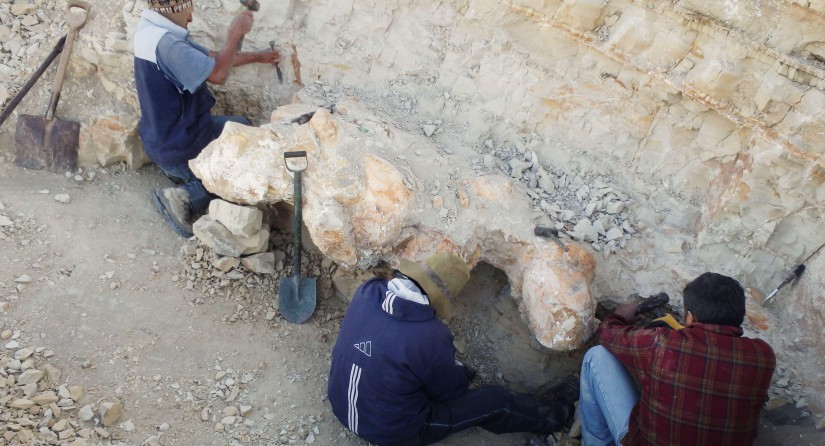
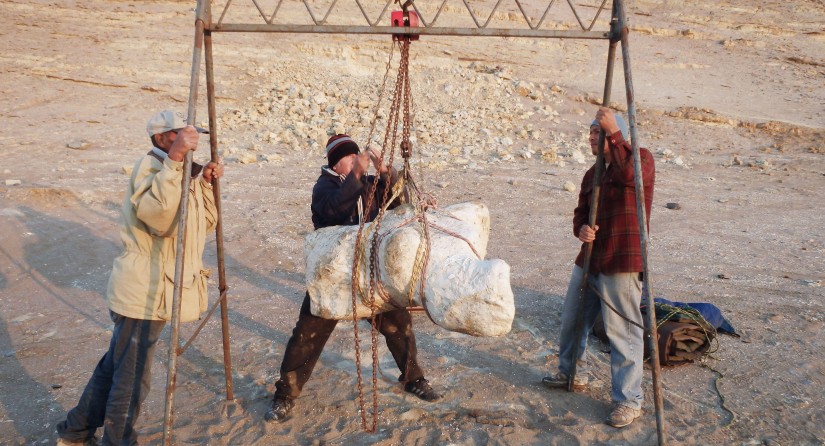
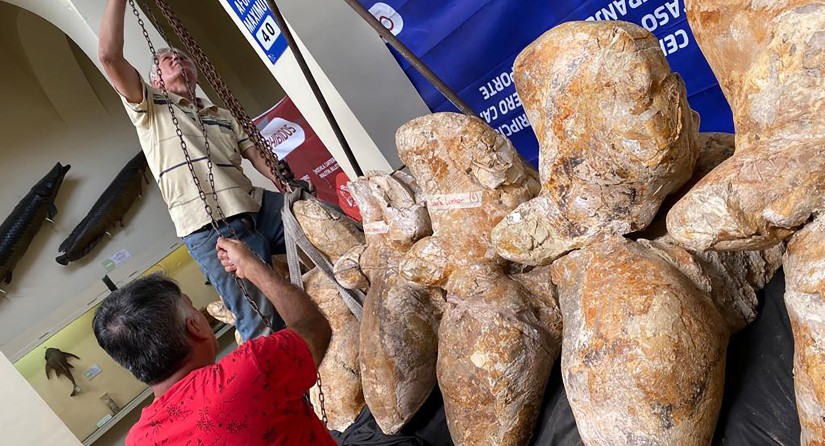
New Heavyweight Champion?
While elongate bodies – up to 20m – were already recorded in basilosaurids, so far no early whales could compete with the heaviest animal known to date, the blue whale. That iconic baleen whale weighs up to 190 tonnes, as heavy as 40 elephants. Named Perucetus colossus (= the colossal whale from Peru), the new species is a challenger to the heavyweight champion title.
The international team surface-scanned the preserved bones to measure their volume, made core drills in the vertebrae and one rib to assess their inner structure, and used complete skeletons of close relatives to estimate how much the new species’ skeleton weighted during life. Reaching between 5 and 8 metric tonnes, the 20-m long skeleton of the new species was two to three times heavier than the 25-m long skeleton of blue whale exhibited in the Hintze Hall of the Natural History Museum in London. To reconstruct the body mass of Perucetus, the authors used the ratio of soft tissue to skeleton mass known in living marine mammals. With estimates ranging from 85 to 340 tonnes, the new species’ mass falls in or exceeds the distribution of the blue whale.
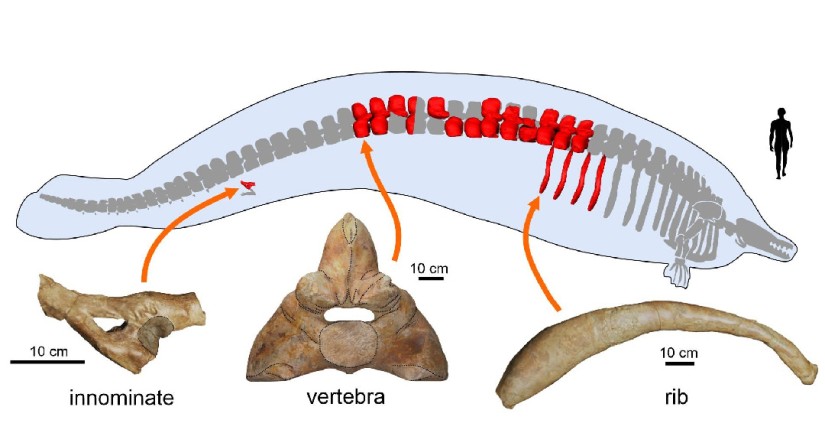
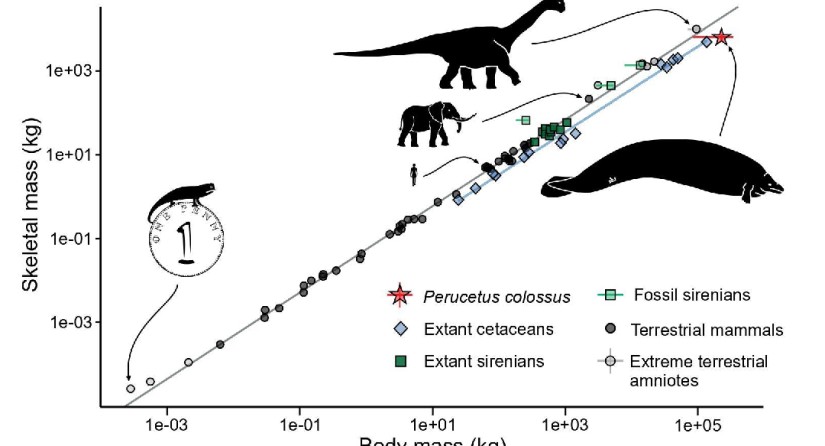
Stability in Shallow Waters
The tremendous bone mass of Perucetus is caused by two types of modifications of the skeleton, the addition of extra bone on the outer surface of the skeletal elements (giving them a bloated appearance, called pachyostosis) and the filling of inner cavities with compact bone (called osteosclerosis), adding even more weight to the skeleton. “These modifications are not pathological”, says Olivier Lambert (RBINS), palaeontologist and co-author of the study, “but well known in many aquatic mammals (such as manatees) and extinct reptiles who mostly live(d) in shallow coastal waters. The extra weight helps these animals regulate their buoyancy and trim underwater. A stable position in the water may have been useful when foraging for crustaceans, demersal fish and molluscs along the seafloor. Such a large and heavy animal may also have been able to counteract waves in high-energy waters.” In modern cetaceans, who can dive at much greater depth and live far offshore, the bone structure is much lighter.
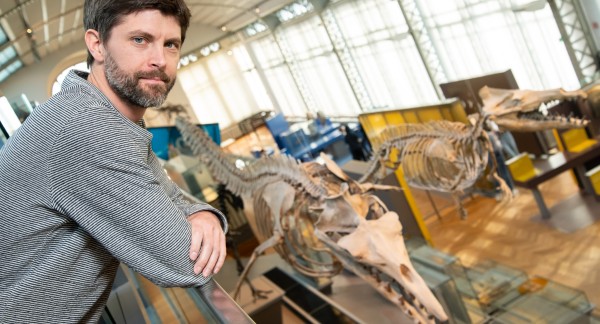
Gigantic body masses have been reached 30 million years before previously assumed, and in a coastal context.
- Olivier Lambert, palaeontologist Royal Belgian Institute of Natural Sciences -
Early Gigantism
So far, the evolutionary shift to true gigantism in cetaceans, as seen in modern baleen whales, has been regarded as a relatively recent event, that began around 5 million years ago in open-sea filter-feeders. Olivier Lambert: ‘Discovering a truly giant species such as Perucetus who is affected by strong bone mass increase changes our understanding of whale evolution. Gigantic body masses have been reached 30 million years before previously assumed, and in a coastal context.’
Palaeontologist Mario Urbina and his colleagues will continue roaming the Peruvian desert, because they are convinced that it still has a lot to reveal. Preparing and curating all these important fossils is one of the great tasks of the Palaeontology department at the Museo in Lima. They have set up a crowdfunding to build a new fossil preparation lab: https://gogetfunding.com/help-peruvian-palaeontologists-build-a-new-paleo-lab/.
